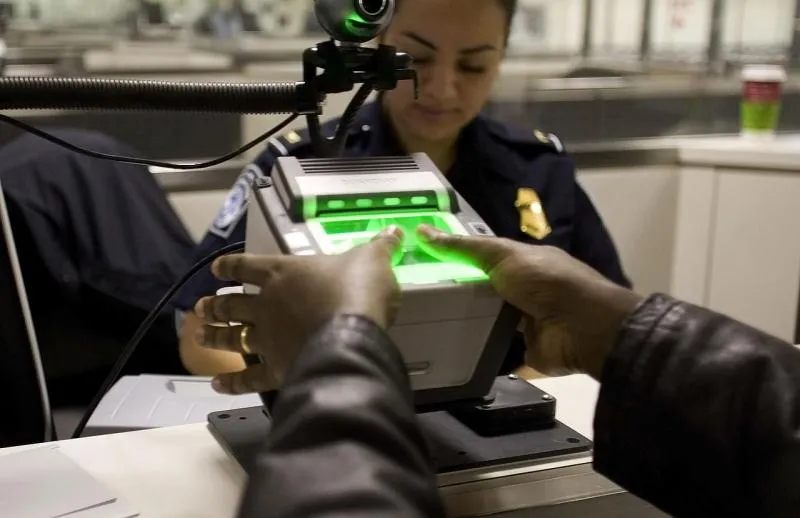Author: Commissioner R. Gil Kerlikowske
Law enforcement agencies can’t afford to be late to the party when it comes to embracing technology as a tool for accomplishing its mission. CBP is no exception, and we are extremely mindful of the important role that technology plays in our operations.
The threat environment is constantly evolving. Terrorists, transnational criminal organizations, smuggling networks – from the top leaders down to the foot soldiers – relentlessly test our detection, interception, and apprehension methods. So we have to be as agile as possible – and agility is a word that’s not always associated with government.
Nevertheless, CBP is embracing technology to change the way we screen incoming people and cargo and to secure our borders. Technology is an invaluable force multiplier that enhances our situational awareness and improves our ability to detect, deter, and respond to all kinds of threats. It also helps us do our job more efficiently.

uses a fingerprint scanner. Photo Credit:
G. Nino, CBP
Biometrics are incorporated into passports, making inspections by our CBP officers faster and more accurate. Automated Passport Control kiosks and our Mobile Passport Control smartphone app are also reducing wait times for busy travelers. Through electronic cargo manifesting, CBP is automating cargo processing through ports-of-entry – eliminating paperwork and saving shippers time and money.
While cameras are already used in much of CBP’s day-to-day operations, CBP was the first federal agency to conduct a large scale feasibility study to evaluate the use of body-worn cameras. Used properly, camera technology can support CBP’s mission and enhance transparency – establishing the facts surrounding a law enforcement encounter with the public, providing evidence of criminal activity, and even documenting excellent professional performance by law enforcement officers.
Border Patrol agents also use fixed towers as well as remote and mobile surveillance systems, enabling them to respond to border incursions more efficiently and effectively. In some areas, CBP also uses Unattended Ground Sensors, which support our capability to detect, and to a limited extent, track and identify subjects.
In our skies, our Air and Marine Operations are using Unmanned Aircraft Systems and P-3 aircraft equipped with technology that captures full-motion video, enabling CBP to disseminate images and other sensor data to ground personnel in real-time, increasing response effectiveness and speed.
But like any tool, technology is only effective if you know how to use it. Training is important, and proper use of technology is a critical part of our Academy curriculum. And we are using the latest technology in the training itself; for example, we use virtual reality simulators to train agents and officers in our new use of force techniques.
It’s astounding how far we’ve come since I was a police officer. A few decades ago, police departments relied on radios and the nearest payphones. Today, officers routinely have in-car video cameras, traffic-monitoring radar units, data terminals with Internet access, body cameras, and department-issued smartphones.
CBP is responsible for securing more than 5,000 miles of border with Canada, 1,900 miles of border with Mexico, and roughly 95,000 miles of shoreline. Investment in and deployment of advanced technology assets are vital to our mission success.

